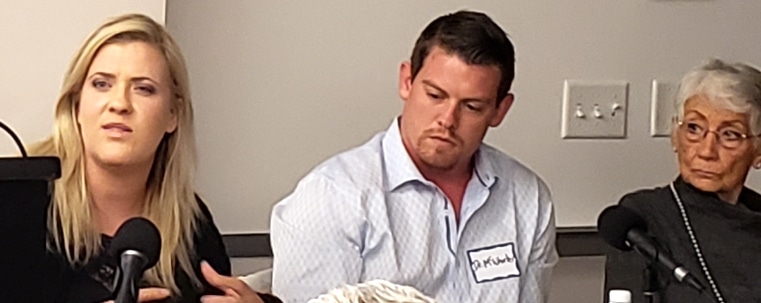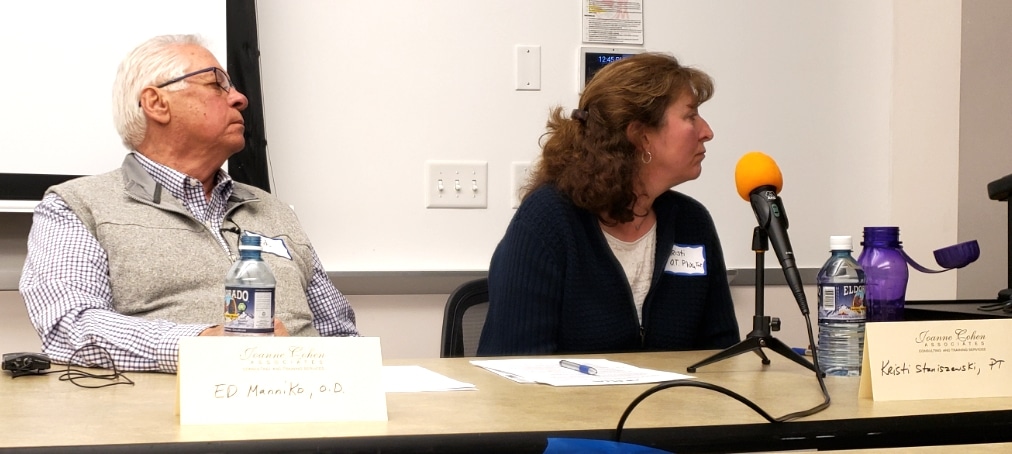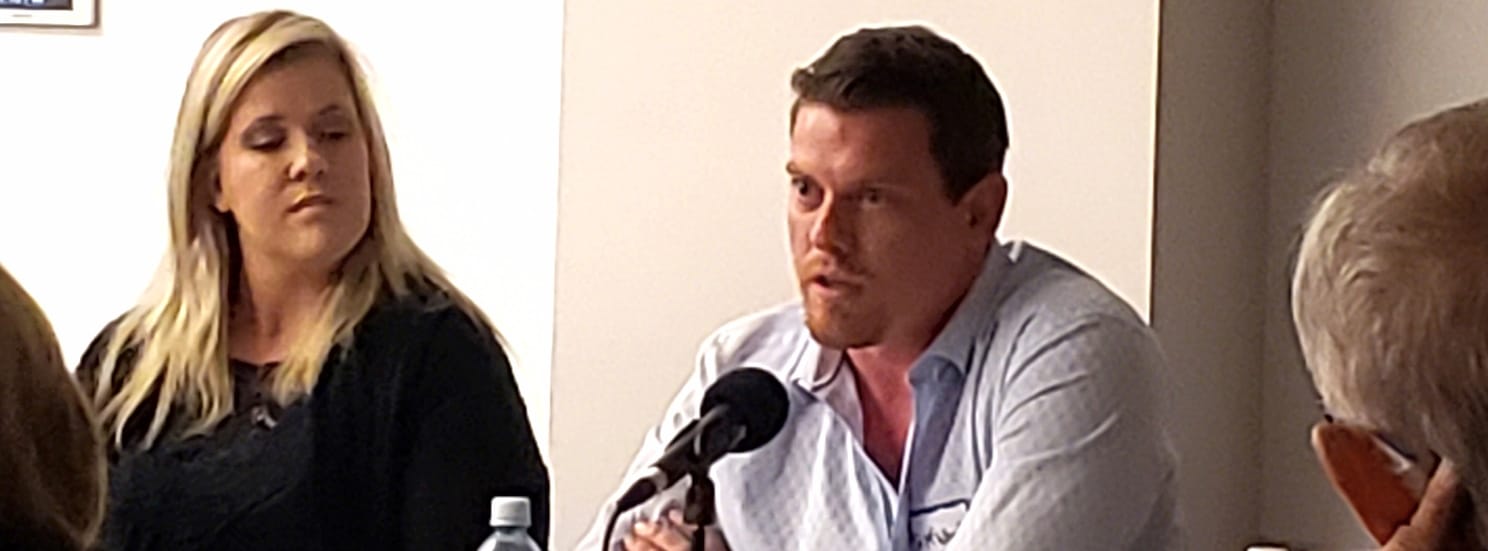May 2019 Treatment Panel Emphasizes Brain’s Ability to Heal
The Brain Injury Hope Foundation does not endorse any healthcare providers. The goal with the Treatment Panel is to provide information to TBI survivors and their families and caregivers so they can research methods best suited for their recovery.
Do you feel as if you are treading water in your recovery from a brain injury, even though you are following doctor’s orders, doing your physical therapy and eating right?

Yes, recovering from a brain injury can take time, and sometimes you reach a plateau with “traditional” medicine. That’s one reason the Brain Injury Hope Foundation features alternative healthcare providers during the Survivor Series Treatment Panels, such as the one on May 10, 2019, at the West Metro Denver Fire Rescue Training Center in Lakewood, Colorado.
The May panel featured:
Marilyn Corners, MDA
International Society of Decorative Artists
1763 S. Leyden St., Denver, CO 80224
[email protected]
303-249-1009
Edvin Manniko, O.D.
Synergy Health Partners
14111 E. Alameda, Ave., suite 200
Aurora, CO 80012
[email protected]
303-437-2187
Jeff McWhorter, D.C. MS, ART
NeuraPerformance Brain Center and McWhorter Chiropractic & Sports Recovery
2899 N. Speer Blvd., Unit 105
Denver, CO 80211
[email protected]
Cell 614-623-4487
Office 303-350-0637
Carly Rossi, LCSW
St. Anthony’s Hospital
Neurosciences & Stroke Navigation
11600 W. 2nd Place
Lakewood, CO 80228
[email protected]
Cell 720-321-7018
Office 720-321-0097
Kristi Staniszewski, PT
CEO, OTPlus
1780 S. Bellaire St., Suite 300
Denver, CO 80222
[email protected]
Office 303-753-0309
Traumatic Brain Injury survivors who come in for art therapy say it helps take away the anxiety they experience and is a “vacation for your brain,” Corners said. She also noted art is now one of their strongest talents.
Staniszewksi concurred, “Art therapy, music therapy, social connections and exercise are very important after an injury. We help identify what people need.” Click here for more information on the benefits of art on memory and creativity.

In addressing the needs of patients OTPlus now offers yoga and tai chi classes for patients, giving them a fun way to interact with others while gaining balance and an avenue for recovery.
“We want to integrate physical therapy into your real life,” Staniszewski said.
Rossi is working to reduce the readmission rates for stroke patients at St. Anthony’s Hospital in Lakewood. Click here for Stroke Resources Handout.
“We have reduced admission rates from 7.2 percent to 4 percent,” Rossi said. “We identified barriers that cause stroke patients to come back by asking the hard questions, such as: What is the hardest thing in your transition? We talk about family and help ID limited resources. Such as, their meds cost $400 so they don’t get the prescription filled. We found out patients weren’t following up with their doctors for six to eight months after a stroke, so we make sure they are re-seen within two to four weeks.” Click here for Stroke Support Group Information. Click here for Stroke Awareness Information.
Eyes: Gateway to the Brain
Since your eyes are the main way of processing information, Manniko works to see if patients’ eyes are working together to properly relay the information to the brain. He also noted that after a TBI many people develop a head tilt, which alters perception.
“We use prisms in eyeglasses to physically realign you with your body,” Manniko said. “There is a lot of anxiety due to visual issues. We are able to help people in three to six month with information gathering and that solves headaches, neck aches and confusion.
“When your eyes are off it’s like you are operating with a 10-year-old computer in today’s world. You are not reading the world correctly.” Click here for Vision and Brain Injury information.
Cutting Edge Advancements
Correcting vision can help with gait and balance issues, something McWhorter addresses by stimulating the neurological system.
“I’m not a stack it and crack it doctor,” he said. “We improve balance, and the vestibular system, fine motor movement, reaction speed, processing speed, executive functions. We offer more cutting edge care than traditional doctors. We take the vestibular and cognitive therapy to another level.”
Some of the tools McWhorter uses are neurofeedback, hyperbaric oxygen chamber, Dynavision D2m, which evaluates physical movements and cognitive processing, along with a GyroStim, a computer controlled rotating chair, which can improve balance and brain performance.
“The spine is home to the nervous system,” he said. “The oxygen chamber increases blood to the brain. We use infrared light to stimulate the brain. … I see a lot of patients getting off their medications.” Click here for NeuroPerformance Brain Center information.
Finances and Treatment
Finances tend to come up during the BIHF Treatment Panels because of survivors limited funds to pay for healthcare not covered by insurance.
“Always ask about finances,” Rossi said. “Some providers will help with pro bono work or they might have a sliding scale. A lot of providers will work with you. You have to ask, though.”
Working with Corners and art therapy is free. McWhorter said he works with patients with payment plans or pro bono work. “I never thought a patient’s financial status should limit a patient’s care,” he said.

OTPlus offers group therapy and classes that help to reduce costs to the patients along with scholarships, Staniszewski said. “There are lots of options,” she said. Click here for OTPlus Group Classes
Don’t Limit Your Recovery
One thing all of the providers agreed upon was there is no limit to your recovery as your brain is constantly rebuilding connections.
“Patients are still progressing and making strides, even years after an injury,” McWhorter said. “There are other options out there that can complement traditional treatments. We have gotten some great results with neurofeedback. It helps rewire the brain.”
Rossi said to celebrate the baby steps. “These baby steps in recovery are not baby steps when it comes to a brain injury. These are huge strides, and we have to remind patients and their families and caregivers. Yes, we want to be further along, but you have to celebrate the small steps you are making. Don’t think you are limited. There’s a whole new horizon out there.”
Corners added, “Be kind to yourself. Less criticism and more validation. And remember TBI stands for Totally Brave Individuals.”
By Eliza Marie Somers

